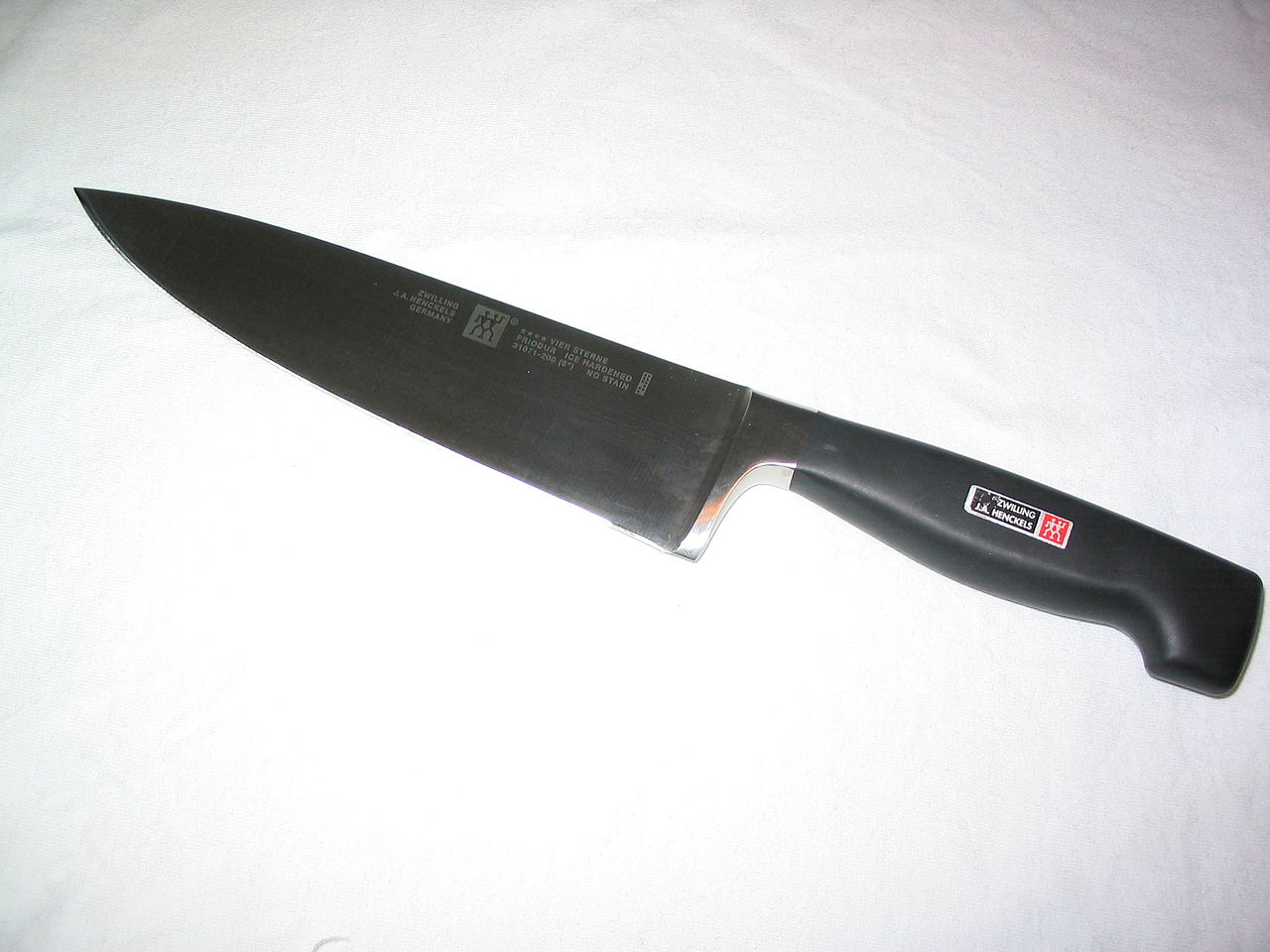I thought I’d share how to properly hold a knife. This method is taught in all the professional cooking schools, and will prevent you from getting needlessly cut (or dicing a finger off), and also make cooking a more enjoyable, stress-free experience. I present to you two pictures on how to hold a knife:
Notice how my middle, ring, and pinky fingers are curled around the handle. Where’s the thumb and index finger go? It’s pinching the blade. See the thumb? It’s right on the steel part, just off the handle.
The other side of the knife. The middle, ring, and pinky fingers are still curled around the handle. Now you can see the index finger pinching the steel part of the blade.
Here’s a video if you need more than pictures, click here to watch.
This method essentially makes the knife an extension of your arm, a powerful tool at your disposal to make short, non-painful, work of your food. When pinching the blade, it doesn’t need to be a death pinch, but merely a sturdy pinch to keep the blade from wobbling from side-to-side as you move the knife around. The other three fingers hold the handle.
This is why it is essential to try out knives to see which is comfortable in your hand. You want the handle to seamlessly become a part of you. It should be comfortable, non-slip, resilient, and really attached to the blade. Another factor to consider is weight balance, you really want the knife to feel like a knife, but not too heavy that 30 minutes of slicing, dicing, and chopping is going to wear you out.
Even if you chop/slice/dice/julienne/whatever food once a week, it is still very important to throw away those set of knives you got for Christmas. No, no, don’t hesitate, do it now! That Chicago Cutlery crap isn’t going to cut it. In fact, the only knives you really need is a good chef’s knife (about $150) and a good paring knife (about $75). Some swear by santokus, and those are fine too (about $150 too). The rest is just … situational knvies. Don’t throw them in the dishwasher, hand-wash them lovingly, it only takes a few seconds. Then dry them lovingly. They will serve you well for so many decades. Have an expert sharpen them for you once every 12 months, they’re listed in the Yellow Pages. Do not confuse this with honing, which should be done at least once a week, by using a sharpening steel. They don’t sharpen, they hone. Remember that.
With this method, I went from cutting myself at least once a month to never in 5 years. I cook frequently, probably at least 3 times a week, and I love it. I wish every single person who cooks knows this method, so cooking becomes more enjoyable for everyone, no matter how good, bad, or disinterested you are.
Share this method, spread the word to everyone who doesn’t know it. The world will be a better place, and fingers will be safer.


